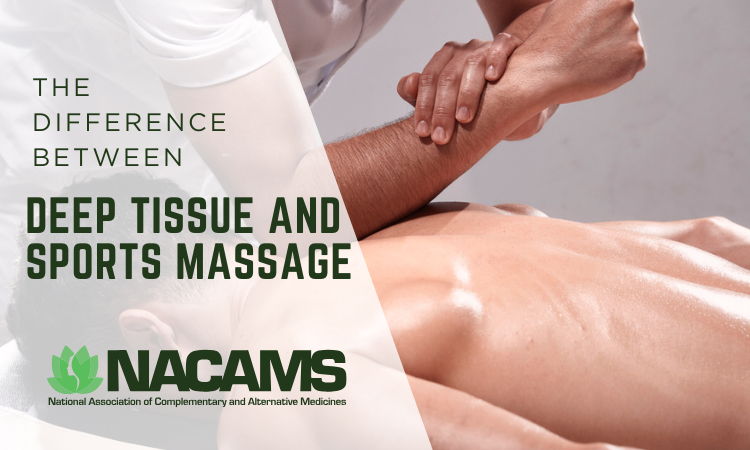
Deep tissue and sports massage are two of the most requested services in wellness and sports therapy. Clients often mix them up, but they are not the same. If you are building your career as a massage therapist, knowing the difference will help you choose the right approach for each person who walks through your door.
It is also worth understanding how each fits into your business from a professional insurance standpoint. Even the best therapists can face unexpected claims, so it is smart to factor that into your practice from the start.What Is Deep Tissue Massage?
Deep tissue massage focuses on the deeper layers of muscles and connective tissue. The aim is to loosen chronic tension and work out areas that have been tight for a long time.
The pace is slow, the pressure is steady, and you are working with purpose. Fingers, knuckles, forearms, and elbows can all be used to reach deeper layers. This is not a quick, relaxation massage. It involves taking the time to get into the tissue and release what is stuck.
You will often see people with:
Long-term stiffness or pain
Postural issues from work or lifestyle
Old injuries that still limit movement
Because the work can be intense, there is always a small risk of post-session soreness or irritation. That is why having professional liability insurance is a must—it covers you if a client’s body does not respond as expected.
What Is Sports Massage?
Sports massage is designed with active people in mind. It can be used to help prevent injuries, prepare the body for activity, or recover after training or competition.
The techniques are mixed and matched depending on what the client needs. This might include trigger point therapy, myofascial release, joint mobilization, or stretching. Before a competition, the session might be quick and energizing. Afterward, it might be slower and focused on recovery.
Sports massage is common for:
Competitive athletes
Recreational runners, cyclists, or gym-goers
People coming back from sports injuries
Some therapists in this area also get additional training or join professional groups, which can make it easier to get accepted by certain insurance providers.
Key Differences Between Deep Tissue and Sports Massage
Deep tissue and sports massage might look similar on the surface, but their purpose and approach set them apart.
Goals
Deep tissue works toward long-term relief, often helping with long-lasting pain and posture problems. Sports massage targets short-term needs like recovery, injury prevention, or event preparation.
Pressure
Deep tissue usually holds steady, heavier pressure that slowly sinks into the muscle. Sports massage changes intensity throughout the session, depending on the goal and timing in the client’s training cycle.
Techniques
Deep tissue stays slow and focused on specific problem areas. Sports massage can include stretching, joint mobilization, and active movement to prepare or restore muscles.
Frequency
Deep tissue sessions might be spaced out to allow the body to recover between treatments. Sports massage is often part of a regular training schedule.
When comparing deep tissue vs sports massage, the main question is whether the client needs to solve a long-term problem or meet a short-term performance goal.
Benefits of Deep Tissue vs Sports Massage
Deep tissue massage can:
Ease chronic pain
Improve posture
Increase flexibility and range of motion
Sports massage can:
Lower the risk of sports injuries
Help muscles recover faster
Support athletic performance
Choosing the right one depends on your client’s situation. A desk worker with years of shoulder tension might be better suited for deep tissue. An athlete training for a race might want a sports massage before and after big workouts.
Insurance Considerations for Massage Therapists
Whether you do deep tissue, sports massage, or both, professional liability insurance is one of the best ways to protect your work. NACAMS coverage includes:
Professional and general liability
Over 500 covered modalities
Coverage in all 50 states
The option to add additional insureds if you work in multiple locations
In addition to meeting workplace requirements, the right liability insurance gives you peace of mind.
Choosing the Right Modalities for Clients
Start with a conversation. Ask about your client’s activity level, pain history, and goals. If someone has ongoing stiffness, deep tissue might be the way to go. If they are training for an event or healing from a sports injury, sports massage could be a better fit. Sometimes, blending the two works best.
It also helps to make sure your own professional insurance covers the specific modalities you offer, so you are protected no matter which approach you use.
Protect Your Practice and Your Clients
Both deep tissue and sports massage have a place in a professional therapist’s toolkit. The more you understand their differences, the better you can match the right one to your client’s needs.
If you want the freedom to work anywhere in the country with confidence, get covered today with NACAMS Sports Massage Insurance.
Download A Free 7-Daily Meditation Journal

Protect Your Career With NACAMS Liability Insurance
1 Year Professional
$179/YR
- 5 Minute Online Checkout with Instant Coverage
- Occurrence Form- Industry Preferred Protection
- Dual Specialists Fully Covered Under One Policy
2 Year Professional
$329/YR
(save $29)
- 5 Minute Online Checkout with Instant Coverage
- Occurrence Form- Industry Preferred Protection
- Dual Specialists Fully Covered Under One Policy
More Articles
Page [tcb_pagination_current_page] of [tcb_pagination_total_pages]